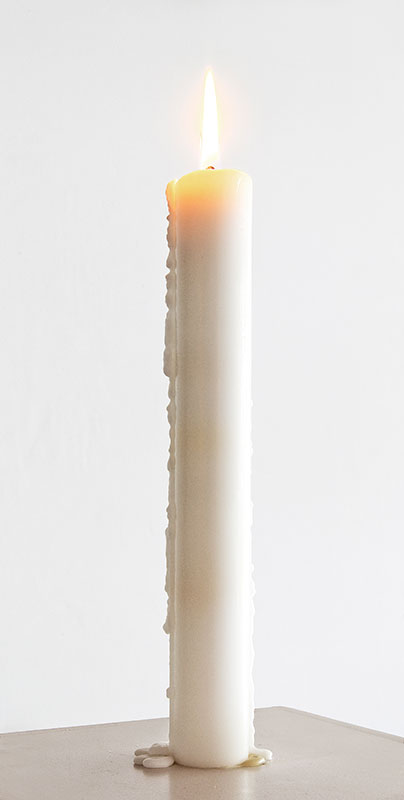On Seeing Black Holes and Smelling Clouds
Katie Paterson’s solo presentation, “From Earth into a Black Hole,” encapsulates sensory associations of the lesser known.
September 21, 2016
In a way that few artists even dare to attempt, Katie Paterson’s first solo presentation in New York, hosted at James Cohan Gallery, manages to encapsulate and bring to light sensory associations which so often lie just out of the mind’s grasp. “From Earth into a Black Hole” expertly thrusts the viewer into a space that explores no less a subject than space itself.
One work in particular exemplifies Paterson’s skill. “Candle,” a single candle which will be burned every Sunday of the exhibition until its closing on Oct. 16th, is divided into 23 different layers, each of which emit different scents when burned, and represent certain components of our solar system. (For instance, Earth’s clouds and troposphere are represented not only by the “scents” of water and humidity, but also by the comforting cleanliness and homeliness of wet basements and washed towels.)
Abstract as this description of a scent may be (distilled water, as we know, does not possess any odor, nor is there a universally recognizable “wet basement” fragrance), it inspires multitudes of curiosity. “Candle” encourages viewers to wiggle their nostrils and toy with what they believe the humidity of a cloud would smell, feel and sound like. Paterson’s rhinal representations of the moon as a the scent of a “burnt almond cookie” and of old stars as the scent of petrol showcase her acute ability to ground inaccessible concepts and objects in the tangible, physical reality constructed by our preexisting sensory associations.
From the back left corner of the main gallery, “Totality” glows through the doorway of a smaller, separate room. Visitors are beckoned towards the central piece of the exhibition, in which the artist uses representations of a lightless phenomenon to cast images of galactic light. Stepping into the alcove, one is greeted by a rotating disco ball, whose paneled surface is composed of nearly 10,000 sequential images of solar eclipses.
Paterson creates a captivating micro-environment that presents the viewer with a romantic yet decidedly simple representation of our galaxy and its beauty. The immersive installation gives viewers the impression that all the stars of the universe have been stuffed snugly into a private room, creating a closed system environment that brings the expansive mass of outer space as close to the viewer as possible.
The exhibition as a whole is built with an emphasis on understatement; of condensing the massive into the tangible, while emanating the same strain of mysticism and awe. In this way, “From Earth into a Black Hole” strengthens and redefines one’s associations with time and space, reducing the enormity of both concepts into that which can be held in your palms. Paterson’s unconventional and multidisciplinary methods articulate and define the relationship between an individual and the universe in an unexpected yet calculated way, offering a refreshing perspective that certainly makes the show worth a visit.
“From Earth into a Black Hole” is on display at James Cohan Gallery at 291 Grand St. until Oct. 16.
Email Katherine Borkov at [email protected].
























































































































































